In order to correctly select relays, customers need know the characteristics of the relays to ensure whether these characteristics meet with the practical requirements. It will be more reliable if these characteristics can be tested in the practical environment. The principles of selecting relays can be seen in table 5. In table 5, in the column "must be confirmed" the item with mark is confirmed and a type of relay can be selected. If there is further requirement, the correspondent items with the mark are required to be further confirmed.
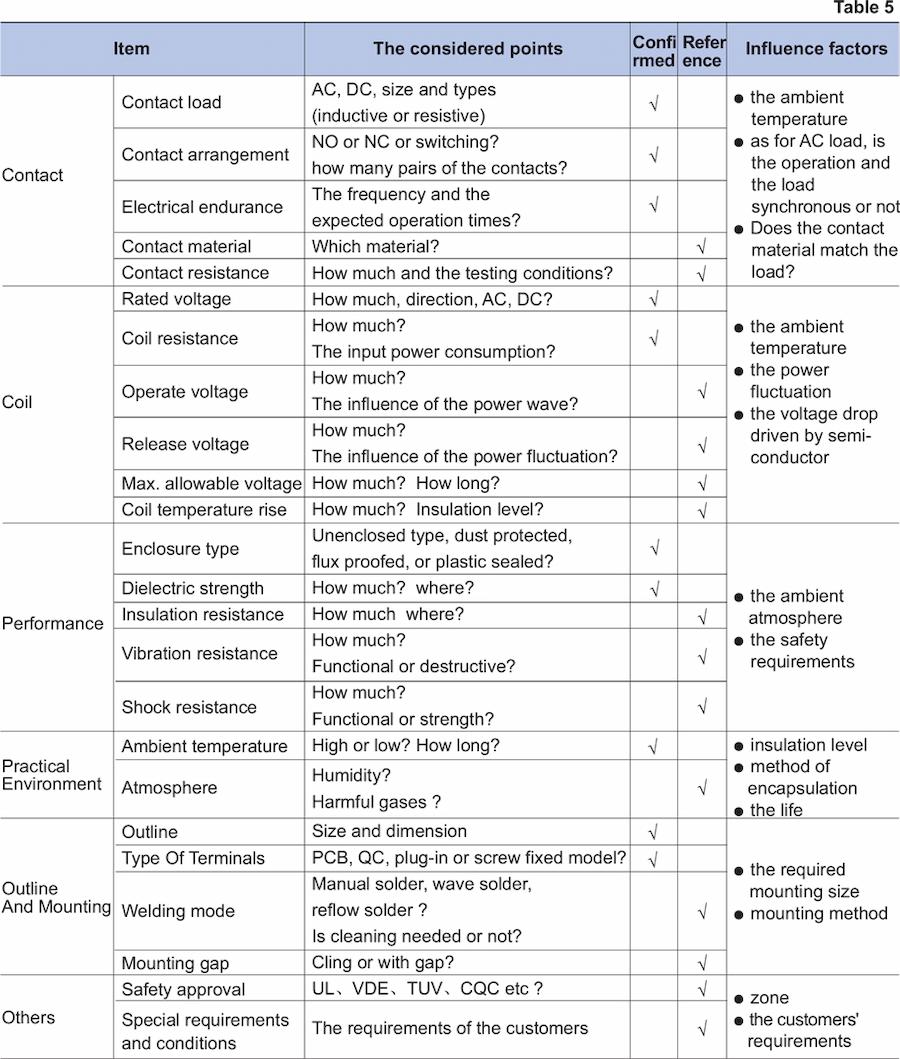
The following will give the further explanation about the items in the table above.
1.1 Contact Load
Before ensuring whether the load the relay can carry in order to meet with the application, we should confirm the type of the real load except for confirming the load value for different loads have different steady state value and inrush value. Seen in table 6. The load given in the instructions are generally the resistive load unless otherwise stated.
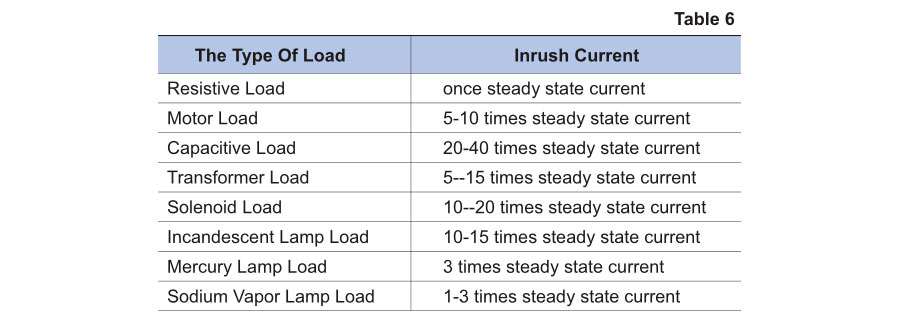
Figure 3 shows the relations between the representative load and the inrush current. In addition, according to the characteristics that the polarity of different moving and stationary contacts will influence the electrical endurance. Please check in the practical application or consult the technician of HONGFA company.
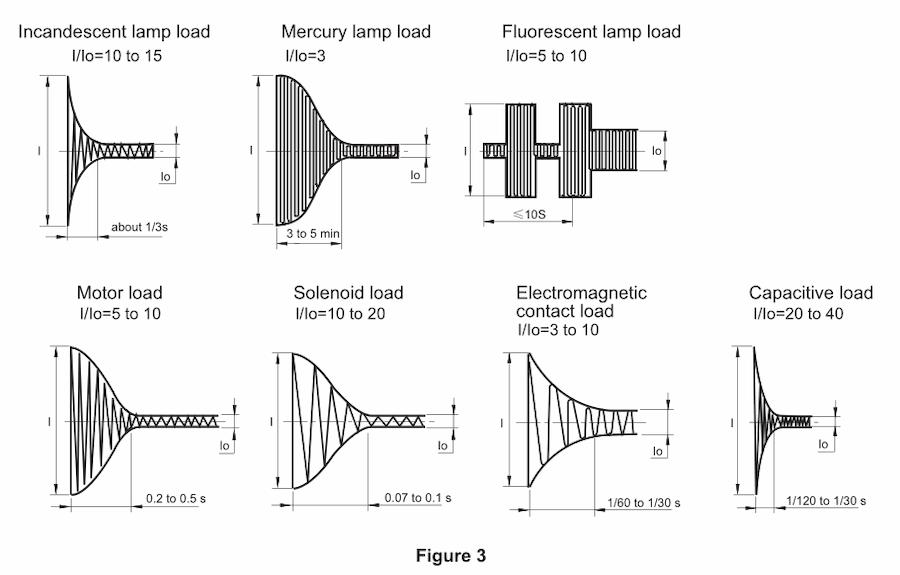
1.2 Contact Material
For the same type of relay, different contact materials are applicable to different load types or ranges. Seen in table 7.
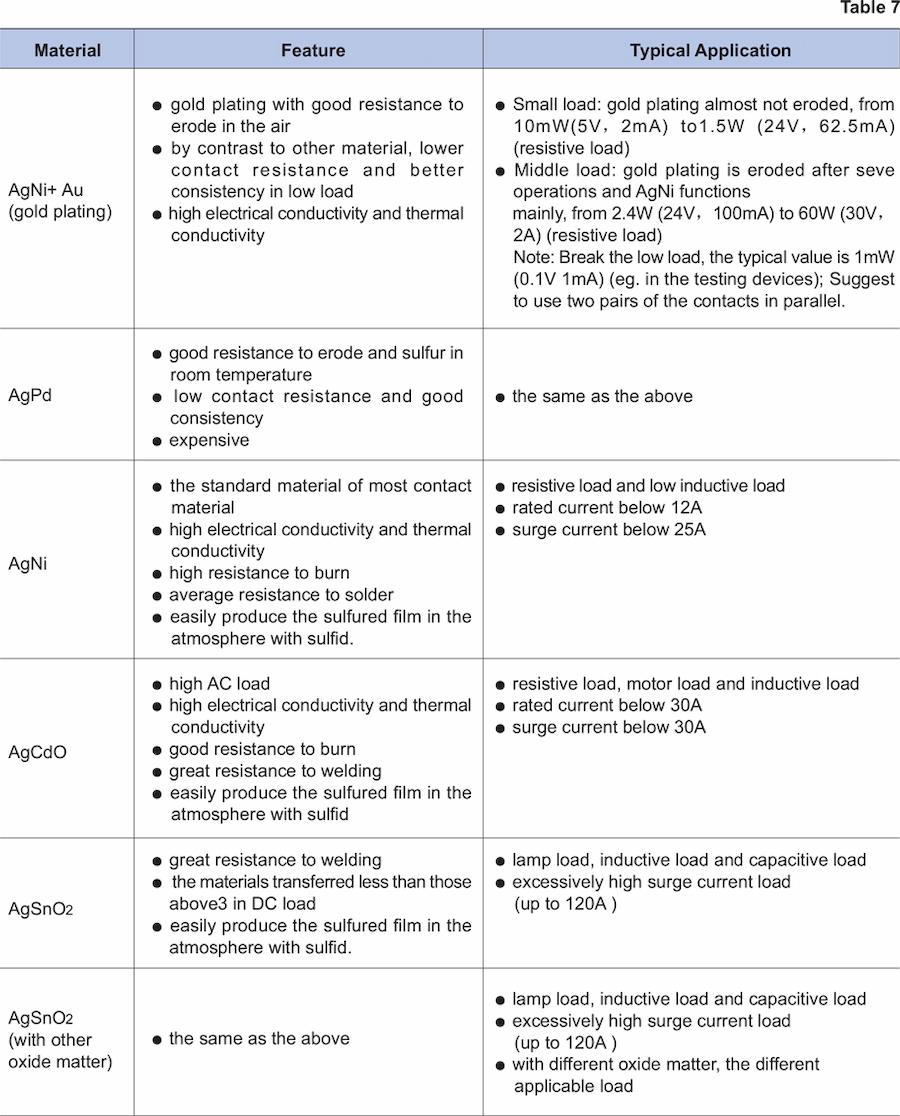
Notes:
1) Consider the maximum current value specified in different relays.
2) It would be better to be checked and tested in application when the conditions are catalogue allowable.
Gold plating of the contacts shows good performance for the low loads. However, for the high load, it can only keep the initial contact performance of the contacts before the relays are used.
1.3 Electrical Endurance
Unless otherwise specified, the electrical endurance in the instruction refers to the standard value under rated load in the circumstance that:
a) Standard condition
b) NO contact
c) 50Hz for AC load
d) Make-break rate 1: 9
e) Resistive load
f) Flux-proof
g) Downwards PCB terminals
h) Separated installation
i) See severity level B according to IEC 61810-7 for failure modes
j) See IEC 61810-7 for unstated information
Considering the flux-proof and the dust-proof types have longer electrical endurance than the sealed type of the same relay, it is preferred to select the flux-proof and the dust-proof types if possible.
1.4 Mechanical Endurance
Unless otherwise specified, the mechanical endurance in the instruction refers to the standard value under rated load in the circumstance that:
a) no contact load
b) Rated frequence of operation, duty factor 50%
c) Downwards PCB terminals
d)50Hz for AC load
e) See IEC 61810-7 for failure modes
2.1 Voltage
To make the relay work reliably, be sure that work circuit can supply the rated voltage to the coil.
In the case of transistor drive circuit, that the voltage on the coil is less than the normal voltage of the transistor drive circuit because of the voltage drop on the transistor, it is recommended to use 4.5V type relay which in 5V transistor circuit and 2.4V type relay in 3V transistor circuit.
Sometimes to shorten the operating time, the coil can be applied to maximum allowable voltage to the coil in the short time. However it should be ensured that the relay will not overheat or even be damaged.
For polarized relays, please check the polarity of the coil voltage.
2.2 Coil Resistance
To make the relay work reliably, be sure that work circuit supplies the nominal coil power consumption to the relay. Therefore please select the suitable coil resistance.
3.1 Enclosure Type
To ensure the reliability of the relay, different ways of encapsulation will require different post-processing(table 8).
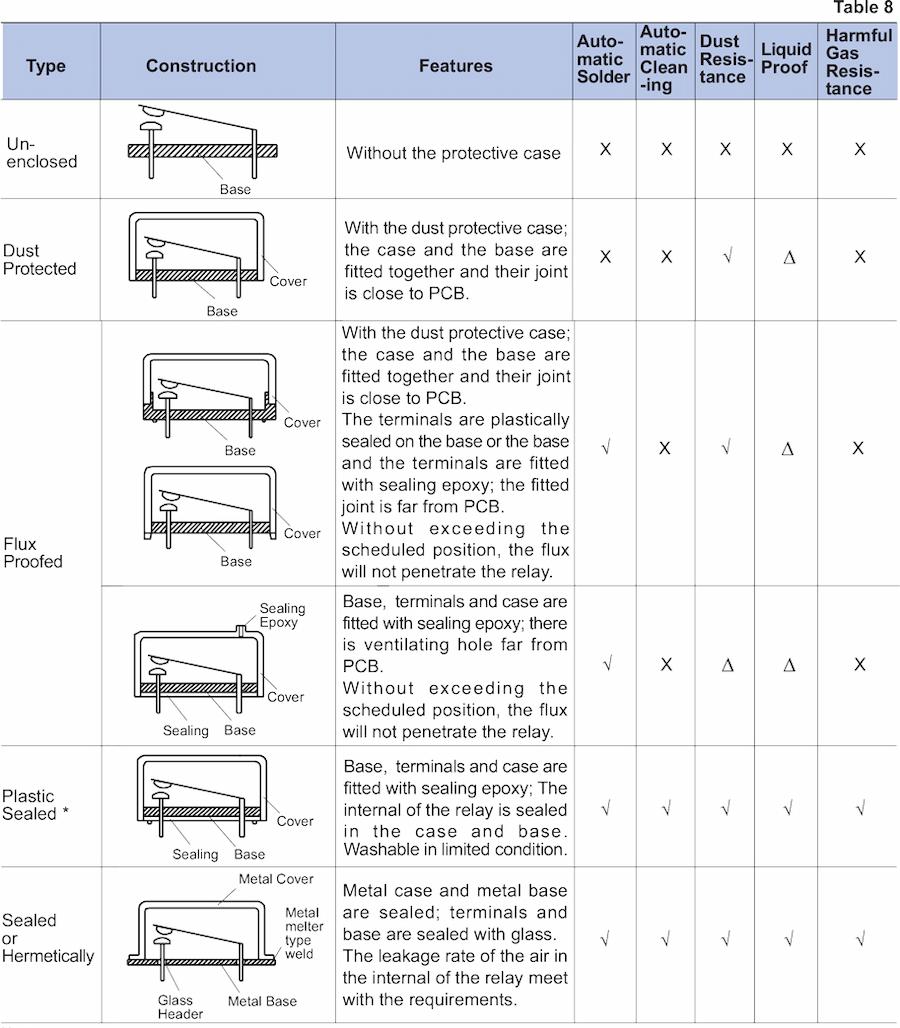
Notes:
1) "means good; "x" means not good; "A" means to notify.
2) Because the plastic has the certain leakage, please use hermetic relays in the conditions that there are harmful gases or the explosive proof is required.
3) *Hongfa, a professional relay factory, recommends to implement washing-free soldering process to avoid washing on relay, ultrasonic cleaning is prohibited. If water cleaning is required after the relay is assembled on PCB, it is a must that you should get contact with hongfa and specify detailed washing method, we'll help you to choose suitable product.
3.2 Dielectric Strength And Insulation Resistance
Please confirm that these two parameters can meet the application requirement and will not lead to such conditions as the breakdown of the circuit, short circuit.
3.3 Vibration Resistance And Shock Resistance
Please confirm that these two parameters can meet the application requirement and will not lead to the failure of the relay in the course of the application.
4.1 Ambient Temperature
Generally speaking, when the temperature does not exceed temperature range speculated in the catalogue, the relay can normally work. When the temperature in application is higher than the temperature speculated in the instructions, please contact Hongfa to ensure whether the relay can be normally used according to the loads.
4.2 Atmosphere
In the atmosphere with high humidity, moisture, even freezing dew and much dust, recommend to use sealed relays. Under high humidity, it would easily accelerate the rust of the relay parts and the dust easily result in the failure of the relay contacts.
In the atmosphere with organic silicon, unsealed relays shall not be used for the organic silicon will accelerate the failure of the contacts. In the atmosphere with moisture and harmful gases as H2S, SO2, NO2, etc., the flux proofed and dust protected products can not be applied while the plastic sealed products can be used and tested in application.
In application, if the ambient atmosphere is better, recommend to use the dust protected and flux proofed relays for they can get the longer eletric endurance than plastic sealed relays.
5.1 Outline And Mounting Gap
The outline sizes of the relays usually have a certain tolerance. Therefore when the circuit and the mounting gap are designed, the design is suggested to be done according to the maximum size in the instructions.
5.2 Welding Methods
Since July 1st, 2006, the terminals of the relays produced have been lead-free. The suggested welding temperature and time are respectively 240℃ to 260"C, 2s to 5s.
If reflow solder is required, it should be confirmed the relay can be reflow soldered according to the instructions.
If you have questions, please contact Hongfa.
5.3 The Model Of The Terminals
Select the suitable shapes of the terminals and mounting methods according to the real conditions.
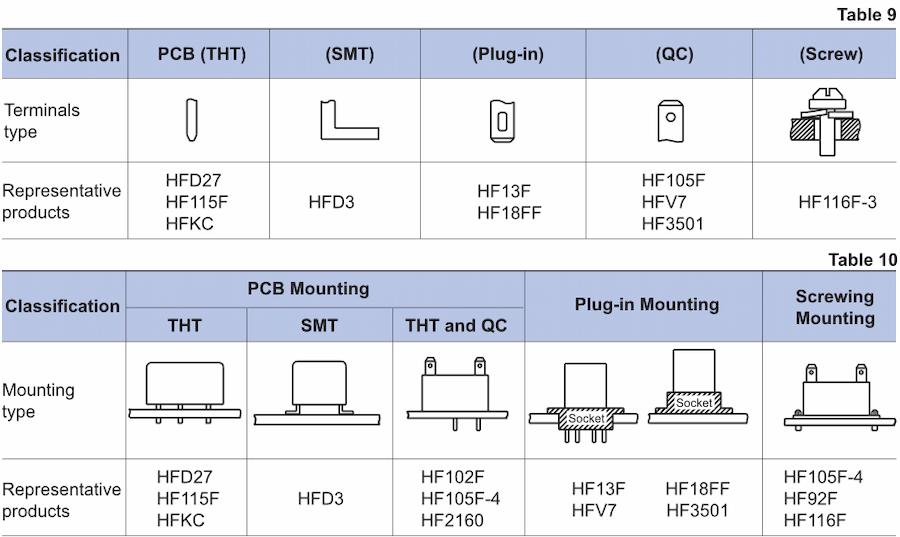
6.1 Safety Approval
Generally UL/CUR approvals are applicable in North America and VDE& TOV approvals are applicable in Europe.
However, due to the international authority of these approvals, most of countries also accept them. If you have questions, please contact Hongfa.
6.2 Special Requirements
Except for normal products, we accept the customer's order for the products with special specifications Please contact Hongfa when required.